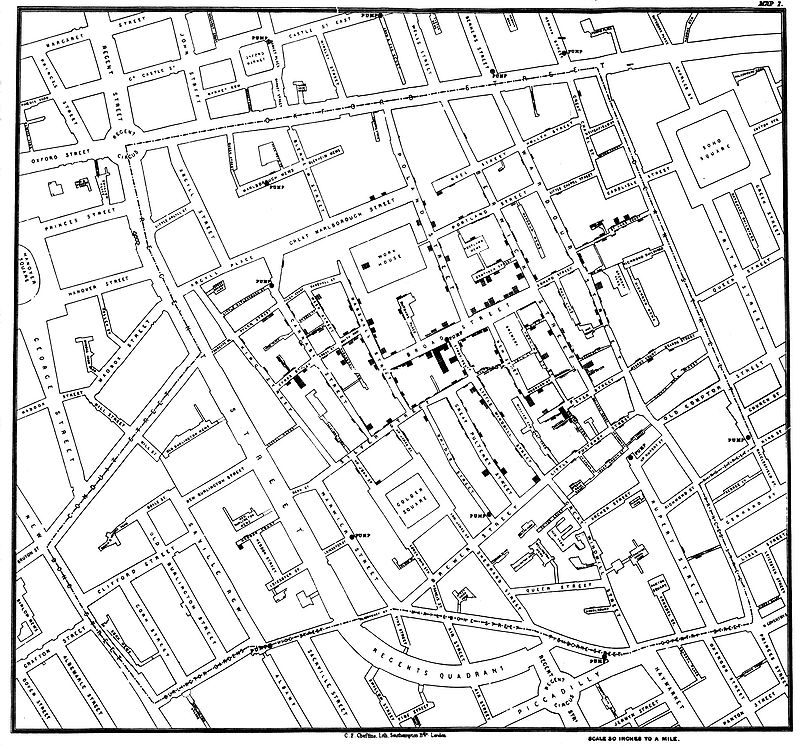This post has already been read 7820 times!
In a previous post, 6 Trends Shaking the Pharmaceutical Market, I presented some of the major challenges affecting the pharmaceutical industry. They included the digitization of healthcare, the erosion of revenues due to the patent cliff, and the strain on government budgets from the high cost of drugs, with the resulting increase in regulations to combat rising drug prices. I also discussed the complexity associated with the global market and the social and life-threatening price of “fake drugs.”
Any one of these is large enough to get an executive team’s attention, but put them all together and it is clear there is a storm brewing on the horizon.
Ready or Not… Disruption is on its Way
The expanding markets, advancing technologies, strained economics and supply chain complexity are just the tip of the iceberg of issues facing established pharmaceutical companies. The dominoes are lining up and the industry is just waiting for the first lead tile to fall that will start the cascading effect of the resulting regulations, potential new business models and new technologies that will change the landscape of the industry forever.
Recently, the retail industry saw the beginning of the end for some of the traditional retailers. Some of the traditional retailers are worth more because of the real estate they own than for their sales and profitability (or lack thereof!). And many malls are losing tenants on a weekly basis as that industry conforms to the reality of commerce being transformed by the likes of Amazon and direct-from-manufacturers omni-channel strategies.
Pharma has been insulated from disruption but with powerful forces shaking the market, the dominoes will fall... Share on XThe complexity of the medical industry initially created a barrier to disruption, but the longer the above problems persist, the more pressure mounts to make changes from both inside and outside the industry.
The Opportunities for Major Gains
But companies do not have to sit idly by as others seal their fate. The digitization of medical interactions and the patient’s world can provide new insights that could never have been otherwise achieved.
With the Internet of Things (IoT), or as some characterize it as the Internet of Everything (IoE), Big Pharma can capture “real world” information about people’s experience with drugs long after the FDA drug trial process has been completed.
In fact, what is emerging in healthcare is not so much an Internet of Things as the “Internet of Me” (and my health). The “Internet of Me” includes everything about me, the state and history of my mind and my body. It’s a potentially vast constellation of data on everything that impacts my health, from genetics, disease and drug history, diet, exercise, travel history, healthcare providers, and more. A digital network will be able to pull up a dossier on me that will provide all the essential information about me and my health.
Digital Networks and the Internet of Me… and Us
“The Internet of Me” combined with the power of a digital network will be able to get insights from this mass data that can’t be found any other way.
It goes beyond the individual. A network view provides insights that emerge from masses of data that are not visible at the individual level (for example clusters of infections or disease outbreaks due to a contaminated water source). A network will be able to monitor, detect patterns early and fire alerts and recommendations.

Networks eliminate error. By connecting care providers and a single version of authoritative data, a state or transaction is viewed and evaluated by multiple care providers and thus undergoes multi-faceted review and validation by the “wisdom of the crowd of care providers.” Errors are much more likely to be caught.
A network also eliminates redundant data which reduces error rates. Finally, data is written directly to the network and eliminates the possibility of errors being introduced when data is transcribed and transmitted in various forms.
The potential for faster more accurate diagnoses and improved treatment is immense. The savings to pharmaceutical, healthcare companies, and patients should be considerable.
The “Internet of Me” is the entire ecosystem that affects my health. Add to that improved systems in place across the various stages of the supply chain, and companies can minimize, if not eliminate, waste from expired drugs, resulting in huge cost-savings, boosting their bottom lines.
What We Can Expect
The systems supporting pharmaceutical companies must get closer to “me and my health.” With a digital network approach that connects patients, providers, physicians and payers, pharmaceutical companies can get better insights into what works and why.
- They can monitor the effects of new drugs and modify “tried and true” drugs to combat diseases that mutate over time.
- As the digitization of healthcare evolves, the “Internet of Me” will find better ways of collecting evidence concerning the efficacy of drugs across a population. With digitization, diagnostics will improve and the on-going monitoring of results will allow doctors to uniquely “fine-tune” medicines and dosages to the needs of “me”… i.e., each individual patient.
- Lot controls, serialization and chain-of-custody within the “Internet of Me” will help ensure the purity of the medicine across all the parties of the supply chain and will guaranteed the authenticity of drugs, chemical constituents and the associated data.
- As communication among patient groups matures, the power will shift from the providers and drug companies to the connected consumer. Digital networks will need to manage permissibility and ensure the privacy of patients. Governments and the public will demand more transparency around what the aggregated data collected by the various pharmaceutical companies reveals. The educated public will begin to use this data to make better decisions around their own health.
As information systems improve, regulatory agencies will catch up to technology’s ability to track every step within the supply chain. Patients will become more educated about drugs. Then it is just a matter of time until an Amazon-like eMarketplace provides an improved business model that takes the middlemen out of the system, resulting in a more efficient and effective supply chain.
Disruption by Digital Networks
Amazon provides insight into what disruption in pharmaceuticals will likely look like. What did Amazon do to disrupt retail?
- Simplified for efficiency – they cut out the middleman producer to consumer and collapsed the delivery chain.
- Increased Speed – they cut out latency of information and shortened the period from need to fulfillment
- Reduced Cost – they made it easy to find the best deals and get it right away.
Similarly a digital network for pharmaceuticals will simplify, speed up fulfillment and reduce costs. The network will provide simpler, faster and cheaper ways to get what we want. It drives costs down for everyone.
What Do We Stand to Gain?
A real-time digital network connecting an “Internet of Me” to care providers, combined with a more streamlined value chain will dramatically boost the quality and efficacy of drugs and treatment. We’ll have better patient engagement and true, patient-reported outcomes. Pharmaceutical companies’ will be able to better serve their customers, whether they be people, payers, providers or governments.
In short, we’ll see a digital network with better data, better supply chain, better medicines, better outcomes.
BTW, if you’re interested in this topic, I recommend reading the white paper Top Trends in Pharma and a case study on how a digital network is being used to manage the pharmaceutical supply chain in Rwanda.
Resources for Healthcare and Pharmaceutical Supply Chains
- Real-Time Supply Chain, GPS and Telematics More Essential Than Ever
- The Future of Freight and Transportation
- The Coronavirus and the Supply Chain
- Global Disruption Due to COVID-19 Removes Decades of Supply Chain Inertia – Now What?
- Modernizing Defense Supply Chains - January 11, 2025
- Supply Chain Crossword Challenge - October 30, 2024
- Infographic: 6 Requirements for Transforming Supply Chains with Artificial Intelligence - June 10, 2024
